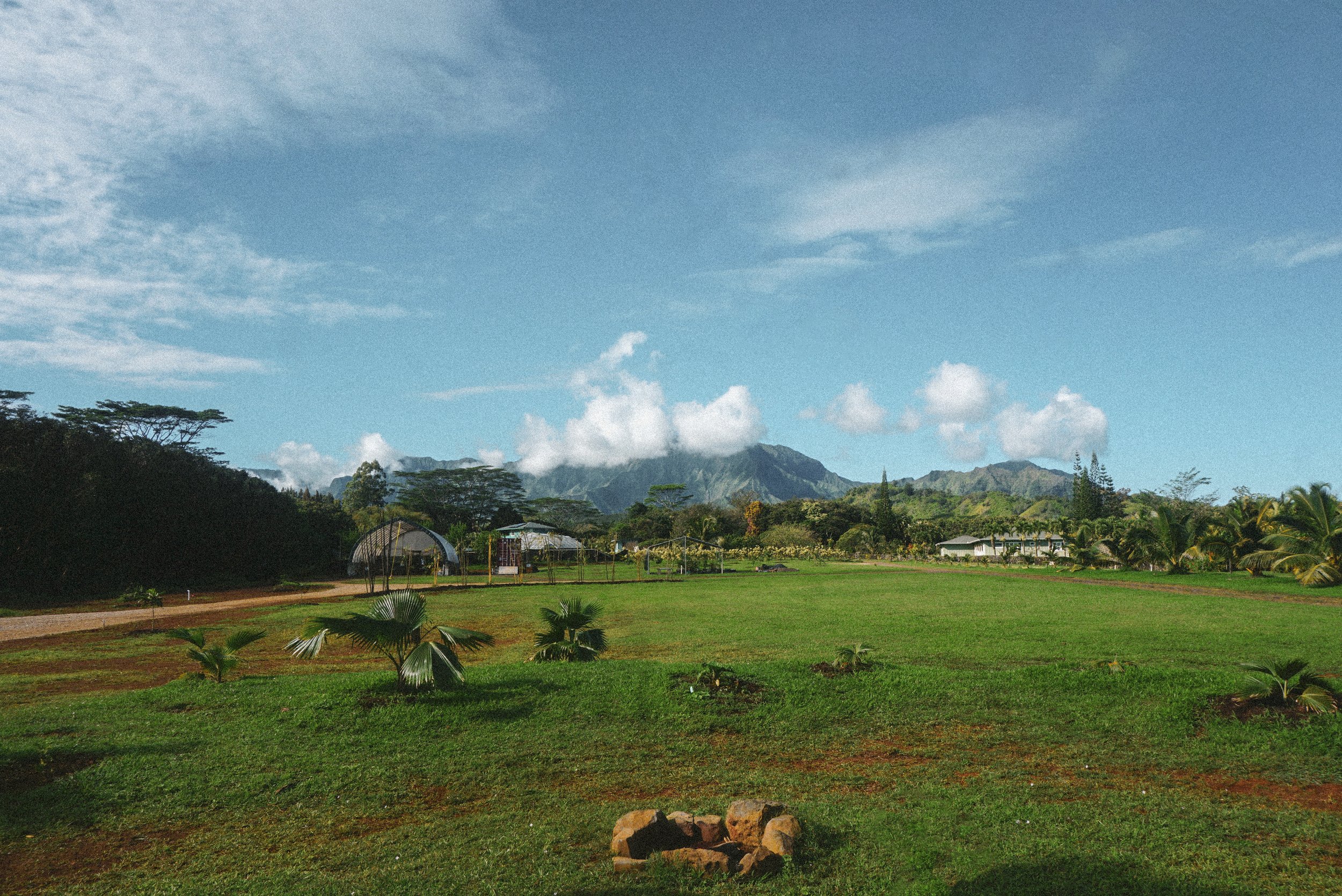
Our projects
Works in progress.
Waihunahuna Foundation was created to care for land & waters on the banks of Kalihiwai Reservoir. Here are some of our current projects.
-
Camellia sinensis, commonly known as the tea plant, is native to China and grows naturally in a climate very similar to that of Waihunahuna. Its deep roots are adept at drawing minerals and nutrients from deep within the volcanic subsoil. This process is known as deep nutrient cycling.
The tea plant loves shade and when healthily pruned is kept down to a bushy understory in winding rows. The overstory of our tea forest will be keystone native species in various stages of succession: koa, 'ohi'a lehua, 'iliahi. Interspersed within and below the tea will be medicinal plants such as māmaki and native groundcovers.
The tea plants, once ready for seasonal harvest, will be processed into white tea, oolong, green tea and puerh. These special Kauai grown teas will be commercially available.
The tea forest is a central project in the vision of Waihunahuna Foundation. Through this project we aim to demonstrate a balanced model of native forest restoration, medicinal plant production, and economically viable agriculture that is promoting biodiversity and healing the ecosystem.
-
Forest gardening is a tradition that has been practiced throughout Polynesia for many generations. This style of subsistence agriculture involves perennial crops, fruit trees, and staple crops grown together in a carefully planned rotation of both time and space, integrated into a balanced ecosystem of both native and introduced species. Growing food & medicinal plants in a diverse web of mixed trees, shrubs and ground cover allows for a healthy, vibrant ecosystem. In this model, the land is constantly self-balancing, with the mindful tending & care of the gardener.
This productive system will create abundant nutritious food for the community, with the goal of reaching the farm stand and market.
-
Kalo, the taro plant, loves the microclimate here at Waihunahuna. The landscape is a gentle slope alongside a stream leading up to a reservoir and lends itself to a terrace and ‘auwai (irrigation channel) system. We plan to integrate lo’i (wetland taro patch) & mala (dryland taro patch) into a broader network of rain catchment systems and natural pools. In addition to growing a staple food crop, this also has the added benefit of increasing habitat for the endemic waterbirds that frequent the reservoir. These include the nēnē, koloa maoli, ae‘o, and ‘alae ke‘o ke‘o.
-
Waihunahuna includes several acres of dense forest. After the native forest was cleared for cattle grazing decades ago, fast-growing, invasive trees such as albizia & strawberry guava arose and were abandoned to run wild.
We plan to replant hardwood trees into this area for harvest & processing into sustainable island-gown building materials. Additionally, we plan to intersperse native forest trees bordering and throughout this segment of forest.
-
The integration of ruminant animals into orchard systems is known as silvopasture. In this system the animals (sheep in our case) feed on the grass in the orchard and in turn fertilize the trees with their manure, creating a more productive orchard.
The sheep, of course, are then able to be utilized for both milk and meat, creating abundance in the system.
-
Here at Waihunahuna we are blessed with an average rainfall of over 100 inches per year. We seek to be responsible stewards of this resource. An important principle in our project is Slow Water. This principle seeks to slow the flow of excess rainfall across the landscape, which allows better percolation into the soil, more efficient uptake by plants, and prevents erosion.
One way to do this is to catch rainfall from our roofs into natural pools. We plan to build a rain catchment system from our roofs which is then filtered through a rock & plant filtration medium, then aerated in a series of waterfalls, and into a holding pool with species of fish and plants that are able to keep the water clean in a balanced ecosystem.
These pools are then able to be piped into various other areas needing irrigation, such as lo’i, mala, and garden beds.
